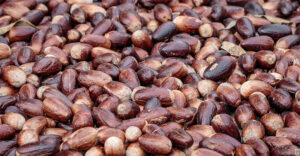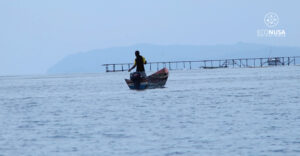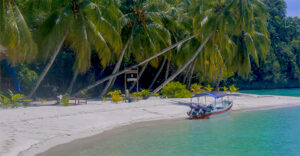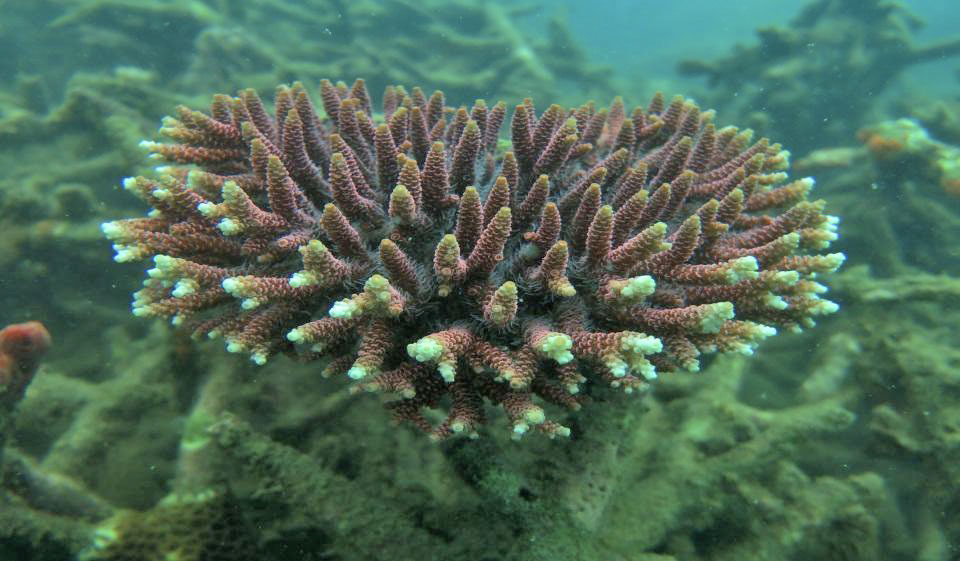
In Indonesia, the coastal and marine areas harbor incredibly rich biodiversity, serving as crucial providers of natural resources and highly productive environmental services. On one hand, these areas hold significant economic potential for human well-being, supporting needs such as fisheries, transportation, housing, tourism, and industry. However, on the other hand, the economic potential of coastal areas is threatened by environmental damage that triggers ecosystem imbalances, ranging from erosion, coral reef degradation, mangrove loss, environmental pollution, to land conflicts. Addressing these issues requires a committed effort from various stakeholders, including local authorities and partners at the village level, to ensure the sustainability of coastal resources.
The waters of Teluk Jor in East Lombok, West Nusa Tenggara, face similar challenges. Administratively, Teluk Jor falls under the jurisdiction of Jerowaru Village and Pare Mas Village, in Jerowaru District, East Lombok Regency, West Nusa Tenggara. Teluk Jor is a small indentation located in the southern part of East Lombok. Both inside and outside the Teluk Jor area, there are lobster aquaculture zones (Panulirus sp), lift net, pier facilities for speed boats, and ferry services managed by the Transportation Agency of West Nusa Tenggara Province.
According to the East Lombok Regency Spatial Planning Regulation (Peraturan Daerah RTRW Kabupaten Lombok Timur 2012-2032), Teluk Jor’s coast status is designated as an utilization area. The main commodity there is lobster, extensively cultivated using floating net cages (Keramba Jaring Apung) since 2000. Other commodities include grouper fish, seaweed, pearls, and salt.
Read also: Station EcoNusa: Promoting Marine Conservation and Sustainable Development in Banda Neira
The waters of East Lombok have a potential Maximum Sustainable Yield (MSY) of 18,242 tons per year for fisheries resources (Ministry of Marine Affairs and Fisheries, 2008). The marine capture fisheries production in East Lombok waters was 19,500 tons in 2020. This increased to 24,023 tons in 2021 (East Lombok Regency Statistical Yearbook, 2023). From these figures, it is evident that the fish catch exceeds sustainable utilization levels
The high dependence on fisheries resources and the homogenous types of livelihoods among fishers and local communities lead to economic vulnerability. Meanwhile, the high pressure on coastal areas necessitates community-based solutions. To achieve these solutions, a forum for aspirations and collaboration at the village level is required, facilitated through the establishment of Community Fisheries Organizations (LKD) and the formulation of village regulations. This is empowered by the mandate of the Village Law No. 6 of 2014.
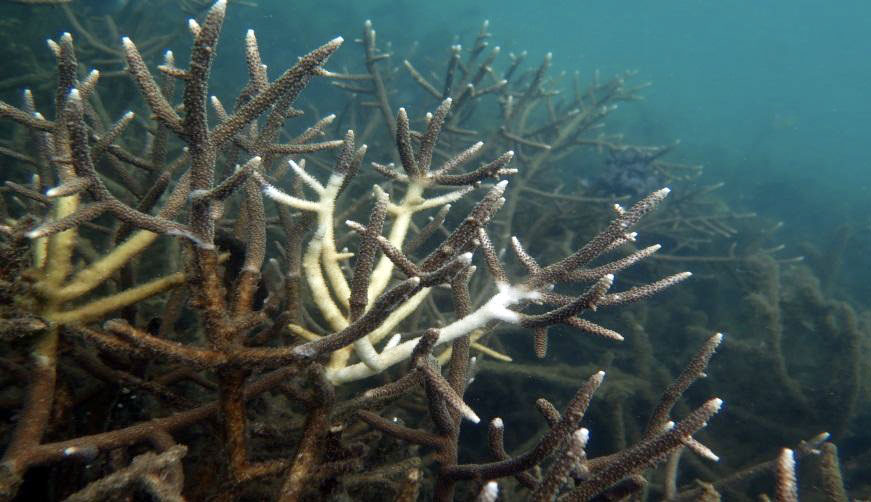
Therefore, EcoNusa Foundation and the Fishers Resource Development Institute (LPSDN) initiated the establishment of Village Community Organizations (LKD) to strengthen monitoring and conservation efforts along the coast. There are two underlying factors driving the need for establishing LKD. First, the absence of community-based institutions overseeing coastal environmental monitoring at the village level, specifically in Pare Mas Village and Jerowaru Village. Second, there is ongoing damage to mangrove areas, seagrass beds, and coral reefs, including damage caused by destructive fishing practices. This collaboration in establishing LKD took place in the context of implementing the goals of the Jaring Nusa coalition (which has 18 NGO members, including EcoNusa and LPSDN) to encourage active involvement of communities in the Eastern Region of Indonesia in all coastal and small island development planning.
Read also: A Travel Note: Attending Molo, A Traditional Fishing Method of Moi Kelim Tribe
With the absence of community-based institutions at the village level to address coastal degradation, the formation of LKD represents a strategic approach. This LKD is the first of its kind in East Lombok Regency, West Nusa Tenggara, oriented towards ecosystem conservation. The establishment of LKD aligns with the mandate of the Village Law, where its primary mandates include supporting community empowerment, participating in planning and implementing development activities, and enhancing public services. Structurally, LKD operates not under but as a partner to the Village Government, as stipulated in the Village Law (Article 94). Further guidelines for the establishment of LKD are outlined in Regulation of the Minister of Home Affairs No. 18 of 2018 concerning Village Community Organizations (LKD) and Customary Village Institutions (LAD).
After completing 12 stages of activities through collaboration between EcoNusa and LPSDN in the second semester of 2023, two LKD have been established and named the Coastal Ecosystem Monitoring and Conservation Institutions (LP2EP). LKD LP2EP has been legally recognized through Village Regulation No. 11 of 2023 concerning the Bale Langgak Segare Coastal Ecosystem Monitoring and Conservation Organization in Jerowaru Village, and Village Regulation No. 9 of 2023 concerning the Bale Langgak Pesisi Coastal Ecosystem Monitoring and Conservation Organization in Paremas Village.
Several activities were conducted in the effort to form LKD and draft village regulations, detailed as follows: 3 public consultation meetings, 1 workshop for work plan socialization, 2 meetings for drafting draft village regulations (Ranperdes), 2 meetings on final drafting, 1 harmonization and synchronization activity, 1 final discussion and determination, and event for dissemination of the village regulations. Copies of these regulations have been distributed by the Village Government of Jerowaru and Pare Mas to the community and village apparatus including the Head of Sub-Village, Village Consultative Body (BPD), Village Community Organizations (LKD) such as LPMD (Lembaga Pemberdayaan Masyarakat Desa or Village Community Empowerment Agency., PKK (Pemberdayaan Kesejahteraan Keluarga or Family Welfare Empowerment), Posyandu (Pos Pelayanan Terpadu or Integrated Health Service Post), Youth Groups (Karang Taruna), and customary groups. The organizational structure of LKD LP2EP’s management has been established by each Village Government, consisting of a Chairperson, Secretary, and Treasurer.
Read Also: Coastal Communities Amidst Poverty, Mining, and Global Warming
Following the issuance of the Village Regulations, the Local Government has formally expressed written support for the newly established LKD LP2EP. The Sub-district Head of Jerowaru, representing the East Lombok Regency Government department (SKPD), along with the Jerowaru and Pare Mas Village Governments, have issued letters of support for future activities. This support includes policy formulation, personnel assignments, and budget allocation in each fiscal year within the East Lombok Regency’s Regional Budget (APBD), as well as the Village Budget (APBDes) of Jerowaru and Pare Mas. The aim is for these funds to be utilized for environmental program development and community empowerment initiatives.
Both village regulations in Jerowaru and Pare Mas only cover the establishment of LKD LP2EP. Therefore, to strengthen the newly formed LKD LP2EP, there is a need to initiate new regulations that include procedures for the selection, appointment, and dismissal of officials, as well as guidelines for collaboration with various institutions. Other stakeholders intending to support coastal conservation efforts in Teluk Jor should provide support, including financial contributions, to enable LKD LP2EP to develop institutionally, in programmatic terms, and in the implementation of community activities.
The current Village Regulations established in Jerowaru and Pare Mas Villages focus solely on the formation of LKD LP2EP. Therefore, to strengthen the newly formed LKD LP2EP, additional initiatives are needed, including the development of rules and procedures for the selection, appointment, and dismissal of officials, as well as guidelines for collaboration with various institutions. Other parties intending to support the preservation efforts in Teluk Jor’s coastal areas should provide assistance, including financial support for LKD LP2EP. This support will enable institutional development, program enhancement, and consistent engagement with inclusive and active coastal community involvement.


